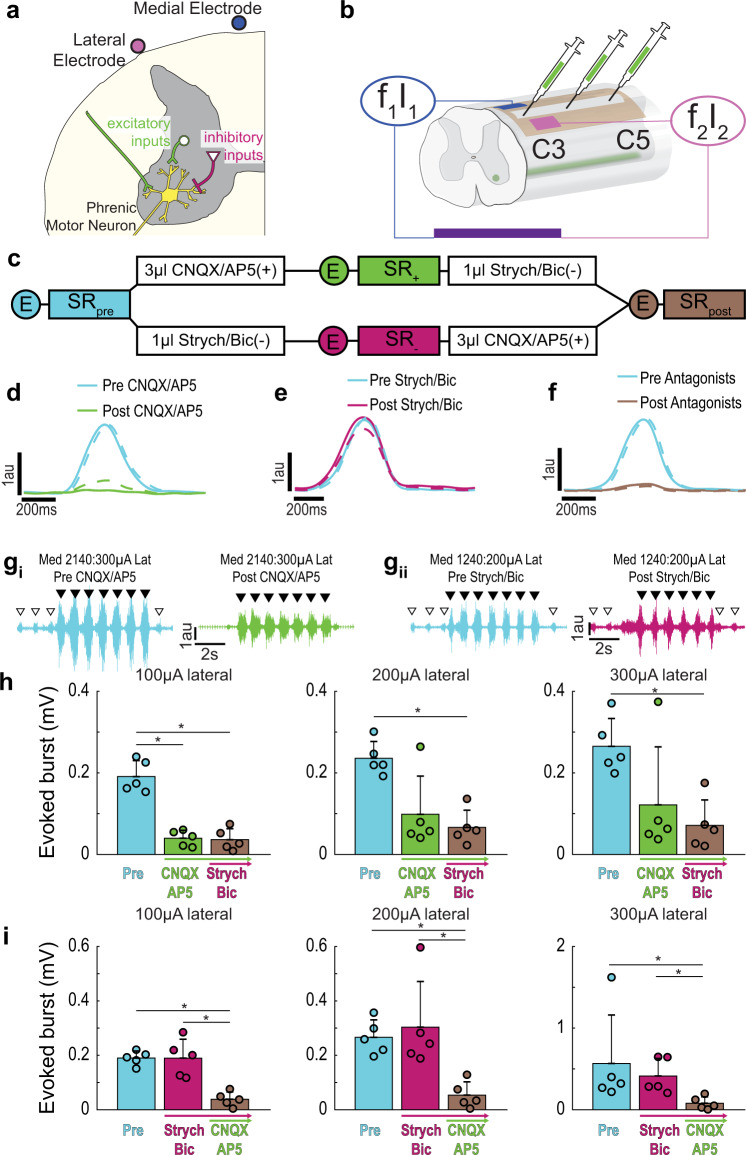Fig. 5. Pharmacologically probing the contribution of synaptic input to phrenic motor neurons in TI stimulation-induced diaphragm activation.
To determine if TI stimulation activates the diaphragm due to direct depolarization of phrenic motor neurons or through activation of synaptic inputs to these cells, we utilized focal injections of glutamate, glycine, and GABAA receptor antagonists. a Diagram of the phrenic motor neuron pool illustrating excitatory (green) and inhibitory (pink) presynaptic inputs. b Schematic of the epidural stimulation grid and unilateral (left) intraspinal drug injection. c Summary of the experimental paradigm. In one cohort (n = 5 animals), excitatory presynaptic inputs were antagonized first, followed by inhibitory antagonists. In another cohort (n = 5 animals) the order was reversed. Circles with E indicate when endogenous activity was measured, SR indicate when stimulus response curves were performed. Panels d–f provide cycle triggered averages of endogenous diaphragm EMG activity (using the activity in the right (unblocked) hemi-diaphragm as the trigger). d Before (blue) and after (green) intraspinal injection of CNQX/AP5 (n = 5 animals). e Before (blue) and after (pink) intraspinal injection of strychnine/bicuculline (n = 5 animals). f Before (blue) and after (brown) both sets of drugs were injected (n = 10 animals). The solid line is average of breaths over the first 30 s post-injection and the dashed line is the average of the breaths over the last 30 s. gi Example diaphragm EMG illustrating the magnitude of TI stimulation-evoked responses before (blue, pre CNQX/AP5) and after glutamate receptor antagonism (green, post CNQX/AP5). Endogenous bursts (white arrowheads) were eliminated after CNQX/AP5 indicating that excitatory drive to the phrenic motor pool was effectively blocked. Black arrowheads indicate the peak TI envelope, marking evoked bursts. gii Example diaphragm EMG illustrating the magnitude of evoked responses before (blue, pre-strychnine/bicuculline) and after glycinergic and GABAergic receptor antagonism (pink, post strychnine/bicuculline). Stimulus current on the medial:lateral wires are shown above the traces. h Impact of CNQX/AP5 followed by strychnine/bicuculline on the TI-evoked diaphragm EMG burst. (n = 5 animals). i Impact of strychnine/bicuculline followed by CNQX/AP5 on the TI-evoked diaphragm EMG burst (n = 5 animals). In panels h and i, data are shown for 100, 200, and 300 µA lateral currents with medial current standardized at the value which evoked diaphragm EMG activity 25% above endogenous (pre-drug) baseline bursting. All data presented as mean +1 SD (*p < 0.05 post hoc, panel h at 100 µA: one-way ANOVA F(2) = 44.77, p < 0.001; all other panels: Kruskal–Wallis one-way ANOVA on ranks; panel h at 200 µA H(2) = 6.860, p = 0.032; panel h at 300 µA H(2) = 6.720, p = 0.035; panel i at 100 µA H(2) = 9.380, p = 0.009; panel i at 200 µA H(2) = 9.420, p = 0.009; panel i at 300 µA H(2) = 9.380, p = 0.009).

